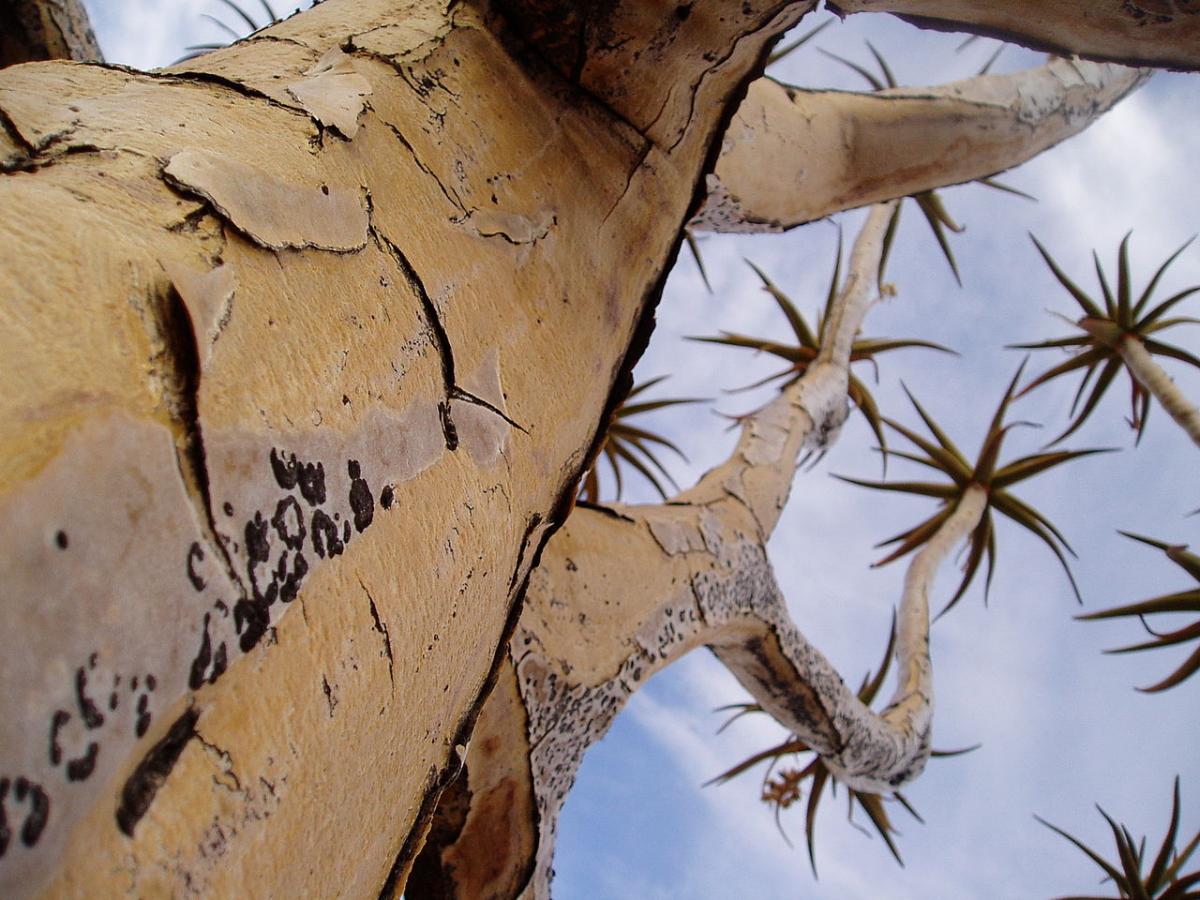
Image - Wikimedia / Notafish
Tree aloes are few, but their beauty is such that they are certainly worth knowing.. Their ability to adapt to an environment where temperatures can rise to 50ºC and where they can spend months without rain, makes them very interesting for cultivation in hot and dry areas.
Technically they do not belong to the genre Aloe, as you can see, but their leaves and flowers are so similar that it is easy to think otherwise.
Types of arborescent aloes
Next you will be able to see which are these aloes that grow like trees. As you will discover, they all belong to the genus Aloidendron. Until 2014 they were within the genus Aloe, but various phylogenetic studies showed that they are genetically different. Even so, we also put the old names so that you can recognize them better.
Aloidendron barberae (before it was aloe barberae)
- Image - Wikimedia / Ton Rulkens
El Aloidendron barberae is a tree native to South Africa that can reach 15 meters in height. Its trunk thickens up to 90 centimeters in diameter, and it has a characteristic gray bark.
The leaves are fleshy, like all those of the genus, lanceolate, green in color and also have serrated margins. Its flowers are orange and sprout in summer. Resists up to -2ºC.
Aloidendron dichotomum (before it was aloe dichotoma)
- Image - Wikimedia / Marco Schmid
- Image - Wikimedia / Holek
El Aloidendron dichotomum it is a native plant of South Africa. It has a solitary trunk that reaches up to 9 meters high and 1 meter in diameter at its base. The crown branches several meters at ground level, and is round. The branches are protected from high temperatures by a very thin white layer that reflects the sun's rays. At the end of these leaves sprout, which are bluish-green in color and form rosettes.
The flowers are yellow, and are grouped in inflorescences that arise from the center of these rosettes. Resists up to -2ºC if they are specific and brief frosts.
Aloidendron dichotomum subsp ramosissima (before it was Ramosissima aloe)
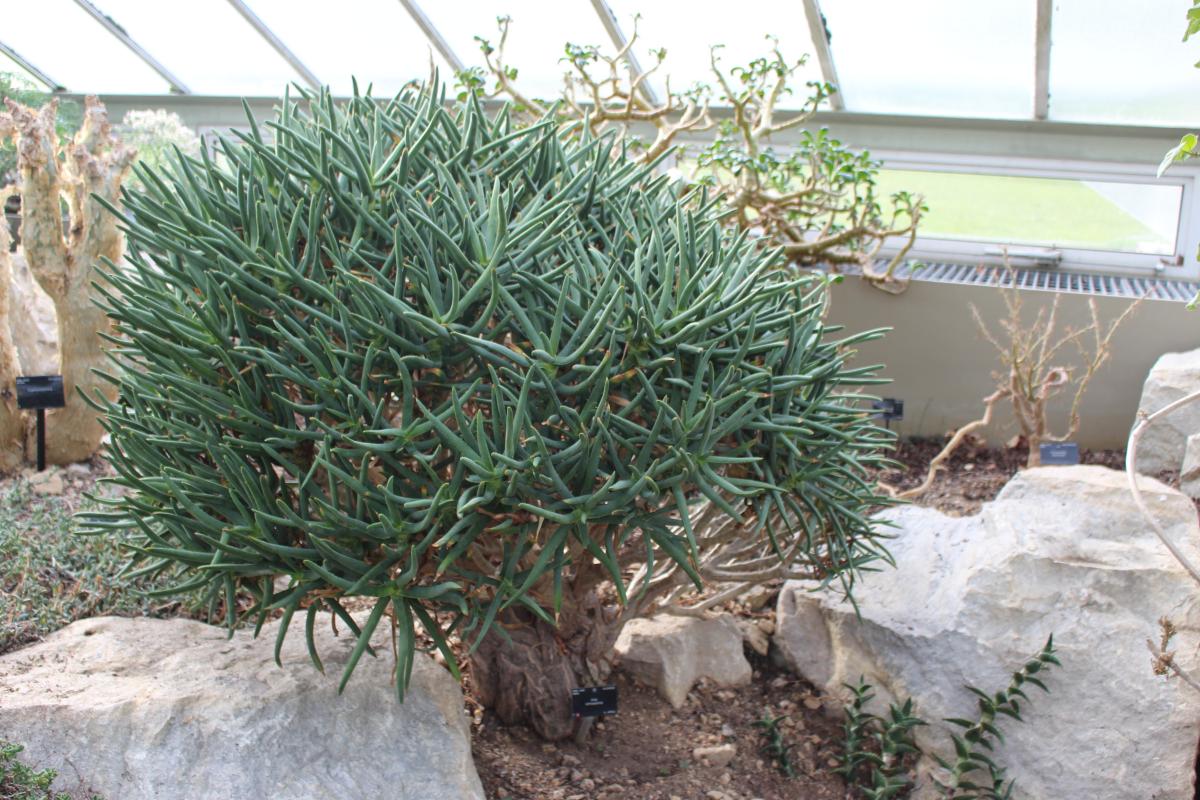
Image - Wikimedia / Emőke Dénes
It is a variety of Aloidendron dichotomum endemic to South Africa and Namibia that reaches 2-3 meters in height. As its name suggests, it branches a lot, so much so that more than an arboreal plant it resembles a bush. The leaves are green, and the flowers are yellow.
It is an endangered species due to loss of habitat. Resists up to -1,5ºC.
Aloidendron eminens (before it was aloe eminens)
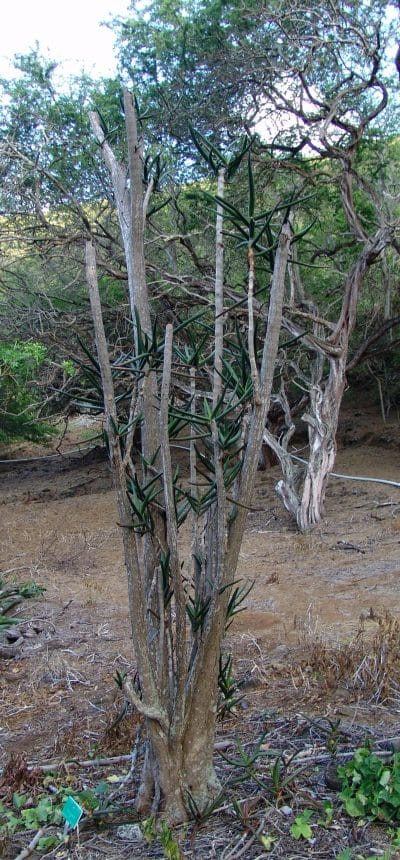
Image - Wikimedia / Drew Avery
El Aloidendron eminens It is an endemic tree to Somalia, where it is in danger of extinction due to loss of habitat. It can be 15 meters tall and it is a plant that branches in an irregular way, that is to say: it does so at a short distance from the ground, but also higher up without its crown getting to acquire a specific shape.
The leaves are dull green, and grow in rosettes at the end of the branches. Its inflorescences are red spikes. Withstands weak frosts, down to -1ºC.
Aloidendron pillansii (before it was Aloe pillansii)
El Aloidendron pillansii it is an endemic tree to Namibia and South Africa, where it is in danger of extinction due to loss of habitat. Reaches a height of 10-12 meters, with a very little branched crown formed by branches from which greyish-green or whitish-green leaves sprout.
The flowers are yellow, and they sprout in summer appearing in the center of the rosettes, grouping in inflorescences. It supports the cold, but frost hurts it.
Aloidendron sabaeum (before it was Aloe sabaea)
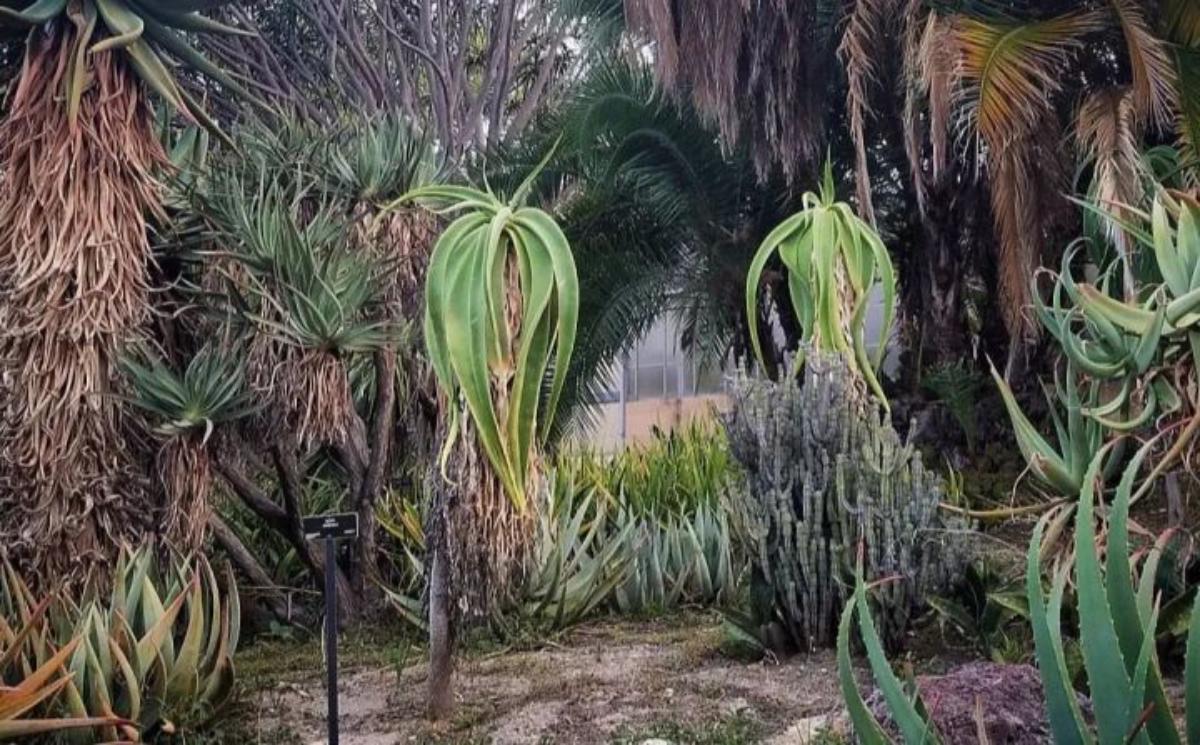
Image - Zhuanlan
El Aloidendron sabaeum is a species native to Yemen and Saudi Arabia that reaches a height of 5 meters. It develops a straight trunk protected by a whitish coat, and a slightly branched crown with long green leaves that tend to hang down.
The flowers emerge from the center of the rosettes, and sprout in red or reddish-brown inflorescences. It does not support frost.
Alloidendron tongaense (before it was aloe tongaensis)

El Alloidendron tongaense is a tree that stands up to 12 meters tall native to KwaZulu-Natal, between South Africa and Mozambique. The trunk reaches approximately one meter in diameter at the base, and its crown is made up of leaves grouped in greenish rosettes. The flowers are tubular spikes, bright red.
It can be confused with the A. barberae, but this is a variety of arborescent aloe with a lower height, and with flowers of different color (those of the A. barberae they are oranges). Of course, both resist the same: up to -2ºC.
Tree aloes care

Aloidendron dichotomum from my collection, grown in the south of Mallorca (Balearic Islands, Spain).
If you want to know how they take care of themselves, the first thing you should know is that their growth is very slow. The normal thing is that they need at least 10 years to reach a meter, so you have to be very patient with them. In addition, it is important to know that they are very sensitive to waterlogging: a heavy and / or very humid soil is not a good soil for these aloes.
For this reason, we are going to tell you how to take care of them:
- Location: they must be outside and in full sun, but provided that they have gotten used to it little by little. As they are plants that generally do not resist frosts, in the event that they occur in your area it is necessary that you protect them in a greenhouse or in a room where there is a lot of light, but keep them away from drafts.
- Earth: to be safe, it is highly advisable to plant them in substrates such as the cheekbone (for sale here), either alone or mixed with 30% black peat. In the case of wanting to have them in the garden, a minimum 50 x 50cm hole will be made and it will be filled with this substrate.
- Irrigation: very, very rare. It must be remembered that they live in arid regions, so they will only be watered sporadically. If they are kept in a pot, it will be necessary to be more aware than if they are in the ground, since the earth dries more quickly, but even so, water will only be poured once a week or every ten in summer, and once a month in winter.
- Subscriber: in spring and summer they can be paid with fertilizers for cacti and other succulents. Follow the directions for use so there is no risk of overdose, which would burn the roots if it occurred.
- Transplant: in spring. If they are potted, they will be planted in a larger one every 3 to 4 years. Choose one that has holes in it, otherwise the water will stagnate inside and the aloe will die.
- Multiplication: they multiply by seeds and branch cuttings in spring or summer.
- Seeds: they have to be sown in seedling trays or pots with vermiculite or, for example, with cactus soil that you can buy here (It must be made clear that they have nothing to do with cacti, but they do also need a substrate that drains the water well). Put them near a heat source, in semi-shade, and keep the substrate moist. They will germinate in about 15 to 20 days.
- Cuttings: cuttings are taken by cutting a branch, and leaving the wound to dry for about a week in a dry place and protected from direct sun. After that time, it is planted in a pot with a pumice, and watered. Keep it in semi-shade. If all goes well, it will root after a week or 15 days.
What did you think of the tree aloes? Did you know them?

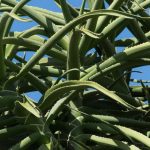
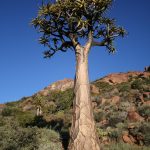
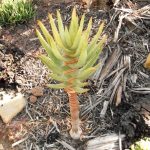
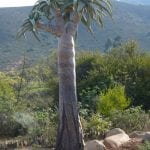
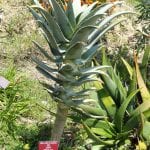
? The article is very interesting. Do you know any nursery where to find these aloes? Thank you. interesting,
Hi John.
We are glad that you liked it.
Aloes can be bought in cactus and other succulent nurseries, especially on the Internet (in physical stores there is usually not much variety).
A greeting.